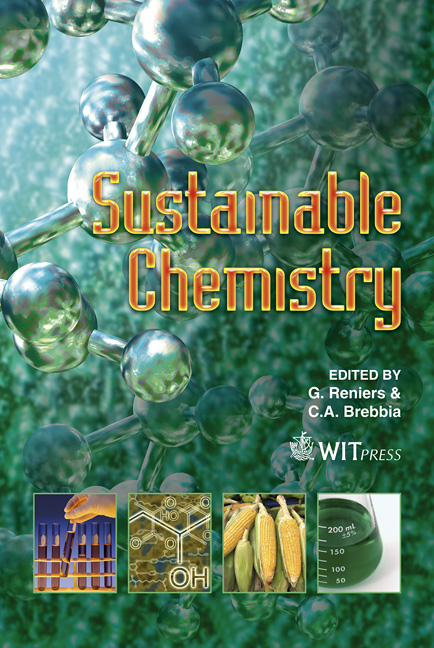Solvents For Sustainable Chemical Processes
Price
Free (open access)
Transaction
Volume
154
Pages
11
Page Range
21 - 31
Published
2011
Size
393 kb
Paper DOI
10.2495/CHEM110031
Copyright
WIT Press
Author(s)
P. Pollet, C. A. Eckert & C. L. Liotta
Abstract
Solvents for sustainable chemical processes P. Pollet1,2, C. A. Eckert1,2,3 & C. L. Liotta1,2,3 1School of Chemistry & Biochemistry, Georgia Institute of Technology, USA 2Specialty Separations Center, Georgia Institute of Technology, USA 3School of Chemical & Biomolecular Engineering, Georgia Institute of Technology, USA Abstract Worldwide, socioeconomic strategies encourage – and may soon enforce – industrial sustainability. Therefore, innovative research and approaches must provide short and long term solutions to reach future legislative targets. For chemical processes, the development of solvents that facilitate reaction and subsequent product separation is paramount to secure economic competitivity while minimizing impact on the environment and energy consumption. Tunable and switchable solvents were developed to address synergistically reaction and separation. Tunable solvents change properties continuously upon application of an external stimulus. For example, organic aqueous solvents allow for the reaction to be homogeneously catalyzed followed by a simple and efficient heterogeneous separation of the product (commonly a heterogeneous catalysis attribute). Chemical processes mediated by water at or below the near critical range can also alleviate the shortcomings of current synthetic strategies (waste production and management, remediation costs). In contrast, switchable solvents change physical properties abruptly upon application of an external stimulus. Piperylene sulfone is one example and can provide a recyclable alternative for dipolar, aprotic solvents such as dimethylsulfoxide (DMSO). Solvents can accomplish more than heat and mass transfer; they can actively contribute to facilitate reaction and product separation while minimizing waste generation and energy consumption. Keywords: solvents, sustainability, reaction, separation, smart solvents, switchable, tunable, near critical water, piperylene sulfone, OATS.
Keywords
solvents, sustainability, reaction, separation, smart solvents, switchable, tunable, near critical water, piperylene sulfone, OATS





